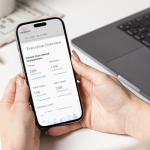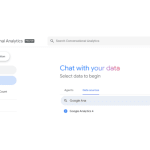
The end of third-party cookies is fast approaching, and from the moment this change was first announced, marketers and strategists from countless industries have been concerned. That's because third-party cookies have been a cornerstone of digital advertising and audience tracking for a long time. These small pieces of data are stored by websites other than the one a user is visiting, and they help companies target users with ads based on their behavior.
However, as the demand for data privacy increases and regulations are adopted, major web browsers have committed to phasing out third-party cookies. While this means a major change in marketing audiences and measurement, some applications — like Google Analytics — are actually in a great position to seamlessly handle the transition. Keep reading to learn how, as well as what you can do to make sure you're similarly prepared.
The Impact on Marketing Audiences and Measurement
Third-party cookies have had a revolutionary effect on digital marketing. They enabled companies to track user behavior across the web, deliver targeted ads, and measure campaign performance like never before. Without them, marketers now need to completely rethink the way they approach some of their most important tasks.
Audience Targeting
The first issue marketers have to overcome is a loss in granularity for audience targeting. Instead of third-party cookies, companies are now leaning into first-party data, which is data collected directly from their own websites or through logged-in user accounts. While this approach respects user privacy, it might limit marketers' ability to reach niche audiences and personalize ad experiences.
Measurement and Attribution
For years, third-party cookies have helped marketers track conversions and attribute them to specific touchpoints in the customer journey. Now, analysts need to find other ways to get this information. First-party data, probabilistic modeling, and cohort-based analysis are all options they're exploring.
Cross-Device Tracking
Third-party cookies also helped with cross-device tracking, allowing marketers to see how users interact with content across multiple devices. With their removal, cross-device attribution becomes more challenging, possibly leading to discrepancies in user engagement metrics and campaign performance.
The Role of First-Party Data and Google Analytics
The end of third-party cookies clearly brings some difficult challenges for digital marketers to solve, but Google Analytics is poised to remain largely unaffected. That's because rather than relying on third-party cookies, which track user behavior across multiple websites, Google Analytics primarily relies on first-party cookies.
First-Party Cookies
Google Analytics utilizes first-party cookies to track user interactions on a specific website. These cookies are set by the website domain itself, allowing Google Analytics to collect data such as page views, session duration, and conversion events. Since first-party cookies are not subject to the same restrictions as third-party cookies, Google Analytics can continue to provide valuable insights into website traffic and user behavior.
Data Ownership and Compliance
By leveraging first-party data, Google Analytics helps website owners maintain control over their data and ensure compliance with privacy regulations. Since users engage directly with the website hosting the analytics script, there is greater transparency regarding data collection practices and user consent.
Enhanced Privacy Controls
Google has implemented various privacy controls within Google Analytics to safeguard user data and respect user preferences. Website owners can configure settings related to data retention, IP anonymization, and user opt-outs, which helps build trust with users by showing a commitment to privacy and data protection.
How Should I Prepare for a (Third-Party) Cookieless World?
Third-party cookie deprecation, while gaining a lot of buzz in the last year, has been on the minds of publishers for quite some time. As a result, most of the major digital ad publishers, such as Google and Meta, have been eager to develop an alternative for marketers.
One of the most promising solutions is audience APIs, which brands can leverage to submit their audience data securely. This method involves advertisers deploying their tracking servers to collect and organize user data directly from their websites or digital properties. Through the publisher's audience API, advertisers can securely transmit this aggregated audience data to publishers who have established relationships with their target audiences.
By leveraging the publisher's audience API, advertisers can maintain data integrity and compliance while still accessing valuable audience insights for targeted advertising campaigns. This collaborative approach fosters transparency and trust between advertisers and publishers, ensuring the effective delivery of personalized ad experiences in a post-cookie landscape.
Need Help From the Experts?
The end of third-party cookies does not mean the end to effective digital marketing. Solutions like audience APIs are already showing that they can fill the gap, and the sooner companies adopt a plan for the future, the sooner they can meet — and surpass — previous performance. If you need any assistance, the experts at Calibrate Analytics will be happy to help configure tracking servers to submit audience and conversion data to partner APIs, meaning you’ll have accurate, actionable data to build your marketing around.






